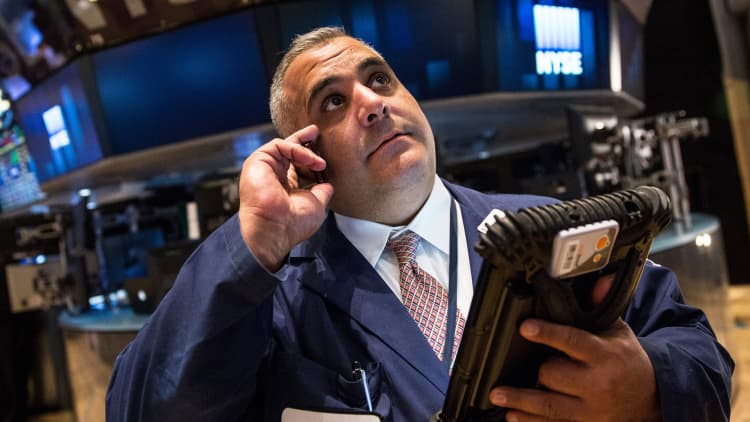
The double upside whammy in Japan has implications for global stocks.
The Bank of Japan announced additional purchases of government bonds, but the real market mover was the announcement that the country's Government Pension Investment Fund would put half its assets in stocks and cut its holdings of government bonds by a third.
And we are not just talking about Japanese stocks, we are talking about investing in international stocks as well, and that is why the global stock markets are up.
Read More BOJ surprises with fresh stimulus, Nikkei surges 5%
The GPIF is doubling its investment in Japanese stocks, from 12 percent of the portfolio to 25 percent, but it is doing the same with international stocks: doubling its investment to 25 percent.
Here's the breakdown:
GPIF: Old investment model
- Domestic bonds: 60 percent
- Domestic stocks: 12 percent
- Int'l bonds: 11 percent
- Int'l stocks: 12 percent
- Short-term debt: 5 percent
GPIF: New investment model
- Domestic bonds: 35 percent
- Domestic stocks: 25 percent
- Int'l bonds: 15 percent
- Int'l stocks: 25 percent
We're talking about roughly $1.14 trillion to invest. This is not necessarily a crazy idea.
How on earth is the GPIF going to pay out future obligations by investing in zero-yielding government bonds? No way. And of course it might help Prime Minister Shinzo Abe's program to combat deflation.
Read More Japan inflation slows in September, increasing pressure on BOJ
By the way, you'll notice that just as the GPIF announces it is cutting its allocation of government bonds, the BOJ announced it is buying government bonds. So it's practically a wash. Coincidence? Yeah, sure.
The Japanese action is cherry on the cake for bulls.
October is traditionally weak, but on the last day of the month here are the results so far:
Wouldn't it be delicious if November—traditionally a strong month—turned out to be a down month? That's my bet, but I am way out in left field on this one. Try finding a bearish trader. There are none.
Not that they are bullish on fundamentals. No, this has all turned into one giant seasonal play—New fiscal year for mutual funds! Big month for buybacks! Last two months are always up!—a Hail Mary on the part of all those hedge funds guys who missed the boat and are desperate to end the year on a high note.
It's been a wild month for many other assets as well. Here's the tally:
Global assets
- Japan stocks: seven-year high
- China stocks: 20-month high
- Dollar: four-year high
- Gold: four-year low
- Oil: two-year low
Elsewhere, on the oil front:
ExxonMobil and Chevron both beat, but forget the earnings for a minute. We have a $10 drop in oil prices this quarter. Exxon will likely have to borrow money to pay its dividend, which it just increased 9.5 percent to 76 cents. We're talking nearly $13 billion a year. You have a decline in cash flow and increasing obligations. Fortunately, Exxon should not have a problem borrowing the money.
Exxon is down 8 percent this year.
Chevron is in the same boat, but has a lower valuation. The stock is selling at six times cash flow multiple and 11.8 times earnings. Exxon shares are selling at eight times cash flow and 14.5 times earnings, and the stock has a lower dividend yield.
Why are investors paying a premium for Exxon? It has a better balance sheet and better return on capital. But the return is declining, and debt is rising, so the justification for a premium is declining every day.
Read More Exxon profit rises 3 percent on refining
What does this all mean? The integrated oil model is having a lot of problems. A $10 drop will hurt them, but a $20 drop will really hurt. They can't cut the dividend, and it's tough to cut capital expenditures, but they will do it. The suppliers will share the pain.
Finally, Hilton reported a modest beat. Revenue per available room, the key metric, was up 8.4 percent systemwide. The company expects 2015 RevPAR to be up a healthy 5 to 7 percent. Like other hotel companies, both prices and margins are up.


